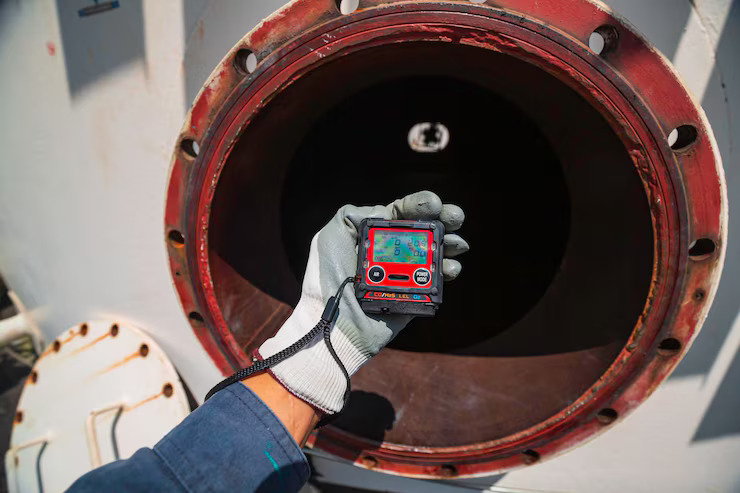In industries where precision, reliability, and accuracy are critical, laboratories play an essential role. Whether it’s for medical diagnostics, product quality control, environmental monitoring, or calibration services, the credibility of a laboratory’s results directly impacts decision-making. To ensure consistency and trustworthiness in these results, the ISO/IEC 17025 standard—commonly referred to as NABL 17025 in India—serves as the global benchmark.
This article explores the NABL 17025 accreditation, its importance, scope, process, and benefits for laboratories and the industries they serve.
What is NABL 17025?
NABL 17025 refers to the accreditation granted by the National Accreditation Board for Testing and Calibration Laboratories (NABL) in accordance with the international standard ISO/IEC 17025:2017. This standard specifies the general requirements for the competence of testing and calibration laboratories.
ISO/IEC 17025 is the internationally accepted standard for testing and calibration, ensuring that laboratories operate competently and generate valid results. NABL, an autonomous body under the Department for Promotion of Industry and Internal Trade (DPIIT), Government of India, is responsible for accrediting laboratories in India based on this standard.
Scope of NABL 17025 Accreditation
NABL provides accreditation in the following disciplines:
- Testing Laboratories – Chemical, biological, mechanical, electrical, civil, electronics, non-destructive, and forensic testing.
- Calibration Laboratories – For physical, thermal, mechanical, electrical, and dimensional measurements.
The scope includes both in-house and field testing/calibration, covering government, public sector, private, and research organizations.
Why is NABL 17025 Important?
1. Assures Technical Competence
The standard ensures that laboratories have the required infrastructure, trained personnel, equipment, and quality systems to produce accurate results.
2. International Recognition
NABL is a signatory to international agreements such as ILAC MRA (International Laboratory Accreditation Cooperation Mutual Recognition Arrangement). This ensures global acceptance of NABL-accredited results without the need for retesting.
3. Regulatory Compliance
For many industries, having test results from a NABL-accredited lab is a regulatory requirement. It helps manufacturers and service providers comply with domestic and international standards.
4. Improved Confidence
Accreditation boosts customer trust in the quality and consistency of test/calibration results, leading to better business opportunities.
5. Process Efficiency
The rigorous standards required for accreditation improve internal laboratory processes, reduce errors, and enhance operational efficiency.
Key Requirements of ISO/IEC 17025:2017
The standard is structured into two major components:
1. Management Requirements
These are aligned with ISO 9001 principles and focus on:
- Document control
- Internal audits
- Corrective and preventive actions
- Continuous improvement
- Customer feedback
2. Technical Requirements
These are unique to laboratory operations and focus on:
- Staff competency and training
- Equipment maintenance and calibration
- Traceability of measurements
- Method validation and measurement uncertainty
- Environmental conditions of the lab
- Quality assurance of test and calibration data
Together, these ensure that a laboratory can consistently deliver valid and reliable data.
The NABL Accreditation Process
Getting accredited under NABL 17025 involves several structured steps:
1. Gap Analysis and Preparation
Laboratories must conduct a thorough self-assessment to identify gaps in compliance with ISO/IEC 17025. This may include:
- Upgrading lab infrastructure
- Training staff
- Preparing documentation
- Establishing a quality management system
2. Application Submission
The lab applies online through the NABL portal, submitting details like:
- Scope of testing or calibration
- Equipment list
- Staff qualifications
- Quality manual and procedures
3. Pre-assessment (Optional)
NABL may conduct a pre-assessment visit to identify potential non-conformities before the main assessment.
4. Final Assessment
A team of NABL-approved assessors visits the laboratory for a comprehensive audit. They evaluate:
- Technical capability
- Documentation
- Records
- Quality system implementation
- Staff interviews and witness testing
5. Non-Conformity Closure
If any deviations are noted, the lab must implement corrective actions and submit evidence to NABL.
6. Grant of Accreditation
Once satisfied, NABL grants accreditation along with a unique certificate number, valid for two years. Surveillance audits are conducted annually.
Cost of NABL Accreditation
The cost depends on:
- The number of parameters to be tested or calibrated
- Size of the laboratory
- Scope of the services
- Type of discipline (testing or calibration)
Costs include application fees, assessment fees, and yearly surveillance charges. Although the process involves investment, the long-term gains in reputation and client trust far outweigh the cost.
Maintaining Accreditation
Accredited labs must:
- Conduct internal audits and management reviews
- Maintain equipment and calibration schedules
- Address customer complaints effectively
- Continuously improve their processes
- Undergo periodic surveillance audits and re-assessment every 2 years
Benefits of NABL 17025 Accreditation
- Customer Confidence: Clients trust accredited labs for accurate and unbiased results.
- Market Access: Preferred status in government tenders and international contracts.
- Reduced Risk: Minimizes costly errors and liabilities due to inaccurate testing.
- Competitive Edge: Accreditation is a mark of quality that differentiates you from competitors.
- Employee Development: Regular training and audits promote skill development among lab personnel.
Conclusion
NABL 17025 accreditation is not just a certificate—it’s a commitment to quality, competence, and continuous improvement. For laboratories, it’s the most trusted way to demonstrate technical capability and win stakeholder confidence. In a world where decisions depend on reliable data, accredited laboratories are the backbone of progress.
Whether you’re setting up a new lab or upgrading an existing one, aligning with NABL 17025 can elevate your standards and open doors to national and global opportunities.


